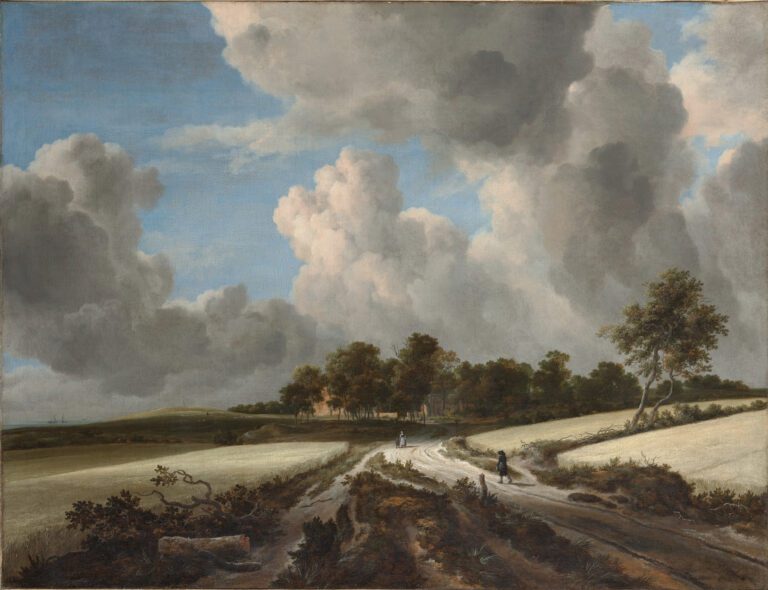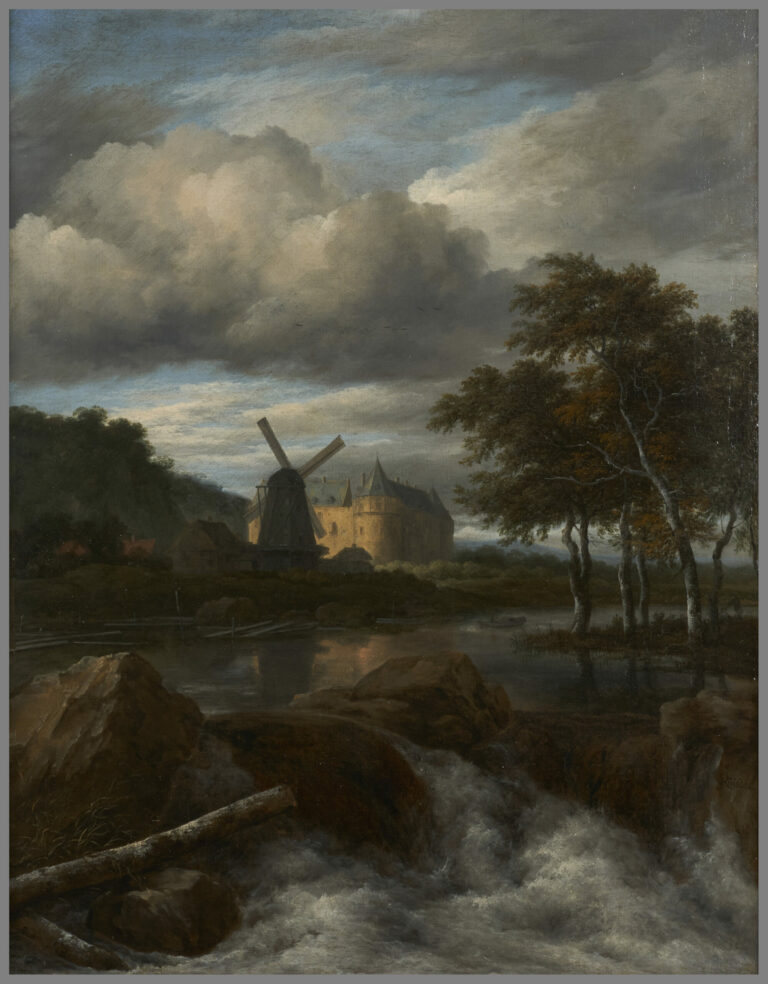Ruisdael
Jacob van Ruisdael, born in Haarlem circa 1628-1629 and deceased in Amsterdam in 1682, stands as one of the most distinguished landscape painters of the Dutch Golden Age. Born into a family of artists, he likely received his training from his father, Isaack van Ruisdael, and possibly his uncle, Salomon van Ruysdael. Admitted to the Guild of Saint Luke in Haarlem as early as 1648, he swiftly developed a distinctive style characterized by meticulous observation of nature, exceptional technical mastery, and unprecedented atmospheric sensitivity. His early works, depicting wooded landscapes and rural scenes from the environs of Haarlem, already demonstrate an emotional depth that distinguishes him from his contemporaries.
Following his relocation to Amsterdam around 1656, van Ruisdael considerably expanded his thematic repertoire to include seascapes, urban views, and his celebrated dramatic compositions of forests, waterfalls, and tumultuous skies. These mature works, such as “The Windmill at Wijk bij Duurstede” or “The Jewish Cemetery,” transcend mere topographical representation to achieve a meditative dimension on the human condition in the face of natural forces. An undisputed master of composite landscape, he combined with remarkable skill elements observed in various locations to create compositions of striking coherence, where light plays a pivotal role in articulating space and expressing a profoundly personal vision. His considerable influence on the evolution of landscape painting would extend well beyond the borders of the Netherlands, notably inspiring the English and German Romantics of the nineteenth century.


